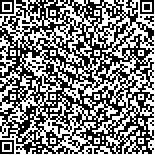| 引用本文: | 杨蕾,严杰,陈一,张佳谊,战欣.不同光-暗周期对企鹅珍珠贝足丝分泌的影响[J].海洋科学,2022,46(10):59-67. |
| |
|
| |
|
|
| 本文已被:浏览 589次 下载 805次 |

码上扫一扫! |
|
|
| 不同光-暗周期对企鹅珍珠贝足丝分泌的影响 |
|
杨蕾1,2, 严杰1,2, 陈一1,2, 张佳谊1,2, 战欣1,2
|
|
1.海南大学海洋学院, 海南 海口 570228;2.海南大学 南海海洋资源利用国家重点实验室, 海南 海口 570228
|
|
| 摘要: |
| 企鹅珍珠贝(Pteria penguin)是生产附壳珍珠的大型海水经济贝类,依靠强壮的足丝将自身固定在硬质基质上,抵抗水流的冲击和抵御被捕食。足丝分泌和形状易受环境影响,本实验研究了三种光-暗周期(全黑暗组、6h光-暗组、12h光-暗组)对企鹅珍珠贝足丝分泌、足丝直径和足丝拉力的影响。结果表明:光照条件下6h光-暗组和12h光-暗组企鹅珍珠贝足丝首次附着率和足丝分泌数量显著低于全黑暗组(P<0.05);光照条件下几乎不分泌足丝,光照严重抑制了足丝分泌,抑制率最高可达100%,恢复黑暗条件后企鹅珍珠贝重新分泌足丝,且分泌数量增加,最多每小时增加(1.94±1.00)根;不同光-暗周期条件下企鹅珍珠贝0~24h、24~48h、48~72h期间足丝首次附着率和足丝分泌数量无显著性差异(P>0.05)。全黑暗条件下足丝远端直径(0.45±0.09)mm和近端直径(0.38±0.09)mm存在显著性差异(P<0.05),足丝直径发生改变;但不同光-暗周期条件下,企鹅珍珠贝足丝远端、中端和近端直径无显著性差异(P>0.05)。全黑暗组、6h光-暗组、12h光-暗组中,企鹅珍珠贝单根足丝拉力分别为(3.40±2.76)N、(2.68±1.10)N、(3.86±2.05)N,三种光-暗周期条件下足丝的拉力无显著性差异(P>0.05)。综上,光照会显著抑制企鹅珍珠贝足丝的分泌,但一旦恢复黑暗条件,企鹅珍珠贝可重新分泌足丝,新足丝的拉力和直径不受影响;不同光-暗周期不会对企鹅珍珠贝的足丝附着、足丝直径和足丝拉力造成显著性影响。研究结果可以为企鹅珍珠贝的野外吊养和游离珠生产提供基础资料。 |
| 关键词: 企鹅珍珠贝 光-暗周期 足丝附着 足丝性能 |
| DOI:10.11759/hykx20211027001 |
| 分类号:S968.31 |
| 基金项目:国家自然科学基金项目(31860727) |
|
| Effects of different light-dark cycles on byssus attachment in the winged pearl oyster Pteria penguin |
|
YANG Lei1,2, YAN Jie1,2, CHEN Yi1,2, ZHANG Jia-yi1,2, ZHAN Xin1,2
|
|
1.Ocean College, Hainan University, Haikou 570228, China;2.State Key Laboratory of Marine Resource Utilization in South China Sea, Hainan University, Haikou 570228, China
|
| Abstract: |
| The winged pearl oyster (Pteria penguin) is a large marine commercially valued bivalve that produces a half pearl. This oyster relies on a strong byssus to anchor itself to the substrate and resist the effects of water flow and predators. The byssal attachment and its properties are affected by environmental factors. In this study, three light-dark cycles (dark group, 6-h light-dark cycle group, and 12-h light-dark cycle group) were used to investigate the effects of the light-dark cycle on byssus attachment, the number of byssuses, the diameter of byssus, and the breaking force of the byssus in P. penguin. The results showed that under different light conditions, the first byssal attachment rate and the number of P. penguin byssuses in the 6-h and 12-h light-dark groups were significantly fewer than those in the dark group (P< 0.05). Light strongly inhibited secretion of the byssus, with an inhibitory rate of up to 100%. The number of new byssuses increased to (1.94±1.00) per hour under dark condition. However, no significant differences in the first byssal attachment rate or the number of byssuses at 0-24, 24-48, or 48-72 h were observed under the different light-dark cycle groups in P. penguin (P> 0.05). The diameter of the byssus distal region (0.45±0.09) mm and the diameter of the byssus proximal region (0.38±0.09) mm were significantly different in the dark group than the light groups (P< 0.05), indicating that the diameter of the byssus changed in the dark group. However, no significant differences in the diameter of the byssus distal region, the diameter of the byssus middle region, or the diameter of the byssus proximal region were observed under the different light-dark cycle groups in P. penguin (P> 0.05). In the dark group, the 6-h light-dark cycle group, and the 12-h light-dark cycle group, the single byssus breaking forces were (3.40±2.76), (2.68±1.10), and (3.86±2.05) N, respectively, and no differences were detected among the three groups (P> 0.05). Therefore, light strongly inhibited the secretion of the byssus. The byssus could be re-secreted under the dark condition, and the single byssus breaking force and diameter of the new byssus were unaffected. No significant differences in attachment, diameter, or breaking force of the byssus were observed under the different light-dark cycles in P. penguin. These results provide basic data for P. penguin culture and round pearl production. |
| Key words: Pteria penguin light–dark cycle byssus attachment byssus property |
|
|
|
|
|
|
